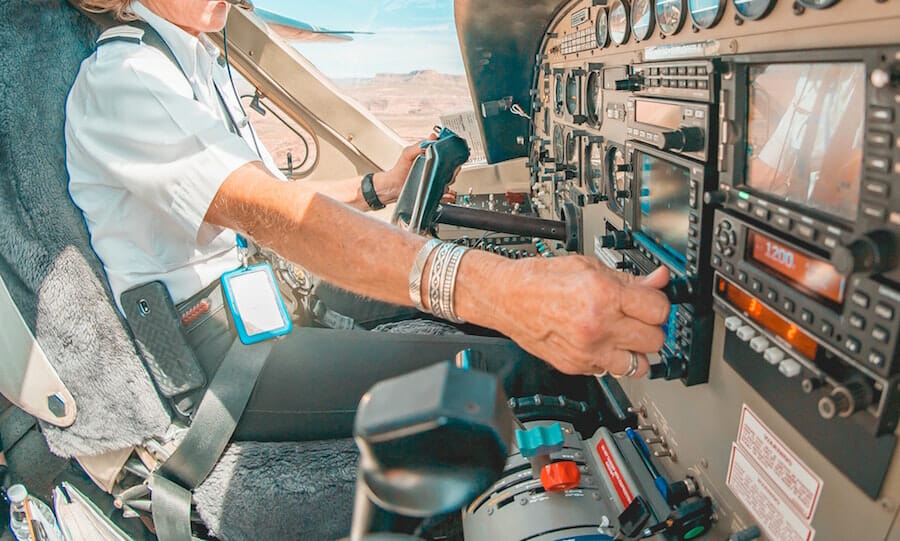
It’s one of the coolest and most important jobs around, but also one of the most taxing on the body. Of course, the public may not see it that way, assuming that sitting down through an entire “shift” can result in little more than sore butt cheeks. But we both know that’s not true, which is why we’re happy that you found this article. As a commercial pilot you suffer a number of pains and injuries on the job that can impact job performance and overall quality of life. Physical therapy can be a tremendous asset by preventing and repairing both acute and chronic injuries. Let’s review.
Why Commercial Pilots Should Make Physical Therapy a Part of Their Normal Health and Wellness Regime
Prevention and Rehabilitation of Acute Injuries Commonly Suffered by Pilots
While most injuries sustained by pilots are chronic overuse injuries, there are a number of acute ones that can occur in-flight.
The most common acute injury comes from the sudden jerking of the plane during turbulence. As a result, many pilots experience hyperextension or cervical sprain/strain which is also known as whiplash. Symptoms include sharp neck pain and stiffness, back problems, and even cognitive issues including a lack of concentration and memory loss. Neither of these are issues you want to experience in the air. If you suspect that you are suffering from whiplash please do consult with a physical therapy clinic that has a chiropractor on staff as soon as possible.
Sudden changes in altitude that cause your plane to drop and rise in quick succession may also lead to a number of soft tissue injuries as you attempt to stabilize your body. Both chiropractor and physiotherapy treatments such as Active Release Technique (chiropractic) and laser therapy or manual therapy (physio) can be leveraged to heal soft tissue injuries.
In addition to acute injury rehabilitation, regular physiotherapy will also better prepare your body for bouts of turbulence. By improving your core strength and fitness a physical therapist will help you stabilize your body in both seated and unseated positions.
Prevention and Rehabilitation of Chronic Injuries Commonly Suffered by Pilots
The most common physical ailments suffered by commercial pilotsare repetitive strain injuries. These overuse injuries occur when you perform the same physical functions on a regular basis while taking off, landing, and flying aircraft. These overuse injuries may include bursitis, arthritis, and various related conditions. Regular physiotherapy work will help prevent and repair these issues.
Receptive “movements” aren’t the only concern however. The mere act of sitting for extended periods of time on longer international flights especially takes a toll. Sitting (even with an ergonomic pilot chair) is one of the biggest precursors to lower back pain which a chiropractor will effectively address. Sitting through long flights also directly results in chronic injury and pain in the gluteal muscles (gluteus medius, maximux, and minimus). A physiotherapist can employ manual therapysuch as massage to help reduce the pain by addressing the soft tissue of the gluteals. In addition, aregistered massage therapist can teach you different stretches and provide postural education to reduce the amount of stress placed on the muscles.
Prevention of Other Concerns That May Be Suffered by Pilots
Your persistent seated position may also increase your risk of developing deep vein thrombosis (DVT), a condition that occurs when a blood clot forms in the deep veins of the lower leg or thigh. Admittedly this is a deeper medical concern that must first be addressed by your physician, however physiotherapy can serve as an excellent supplement to your prevention plan. A physiotherapist will provide you with a regime of exercises that that will help improve range of motion in your lower extremities and can help you improve circulation through compression therapy, which involves wearing compression stockings. Compression stockings will assist in increasing circulation, improving blood flow, and increasing oxygen to leg muscle tissue while reducing the risk of swelling and DVT during long flights.
Never suffer through another redeye with unnecessary pain and discomfort again. If Greater Vancouver is your home base then schedule a consultation at our Burnaby clinic today.
Another article you may be interested in:
